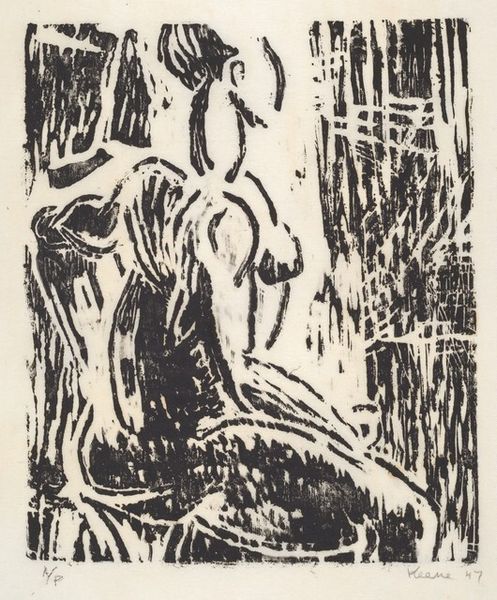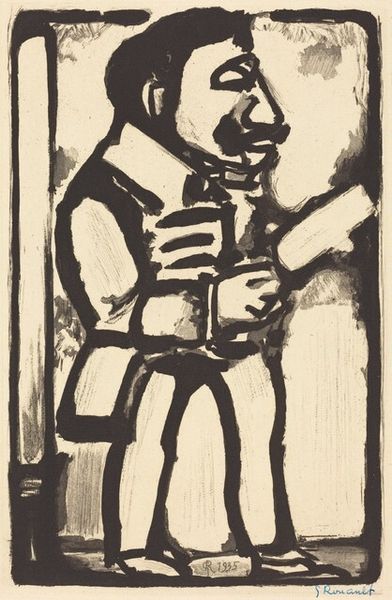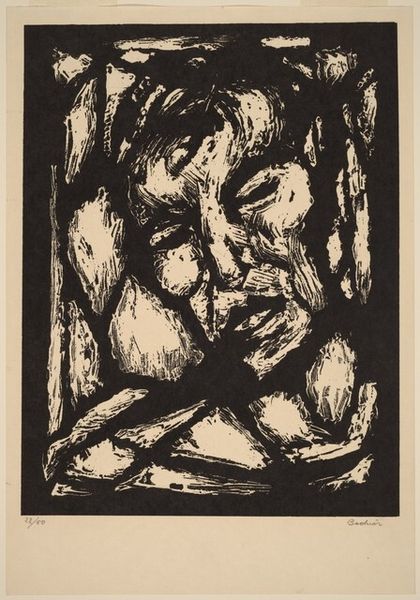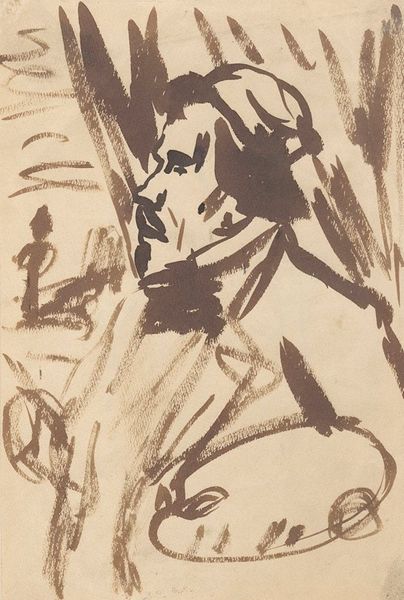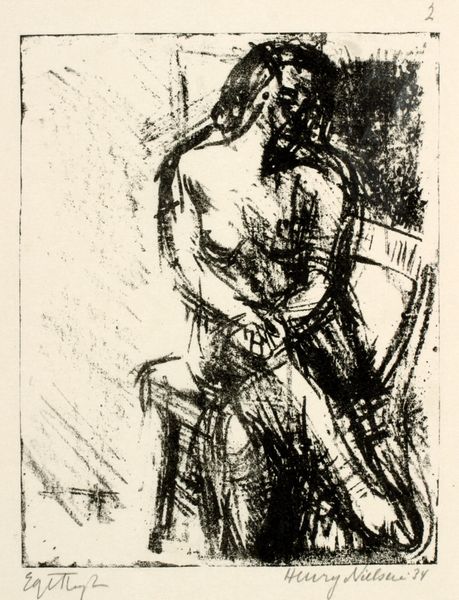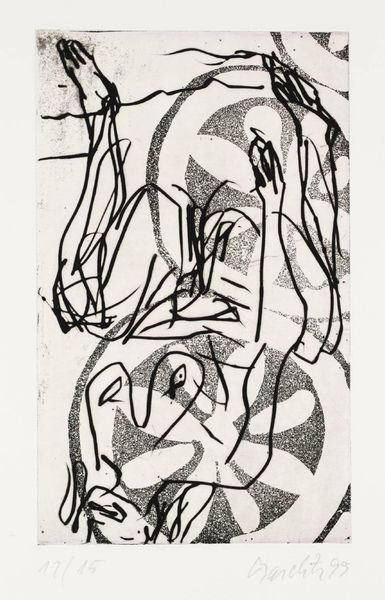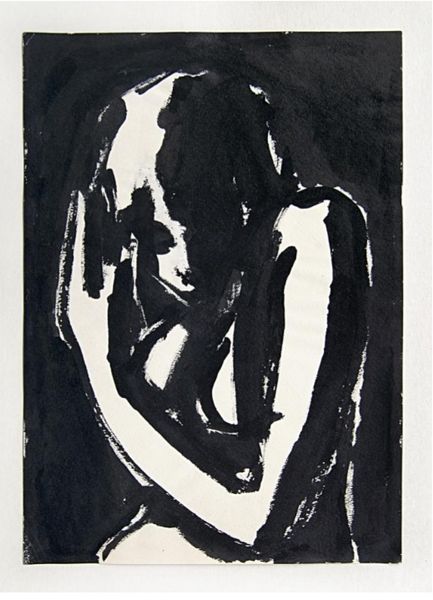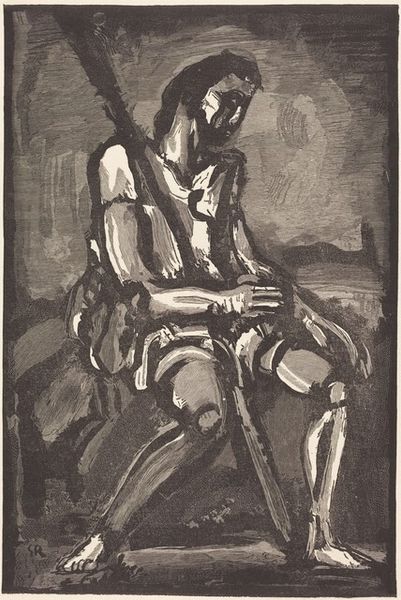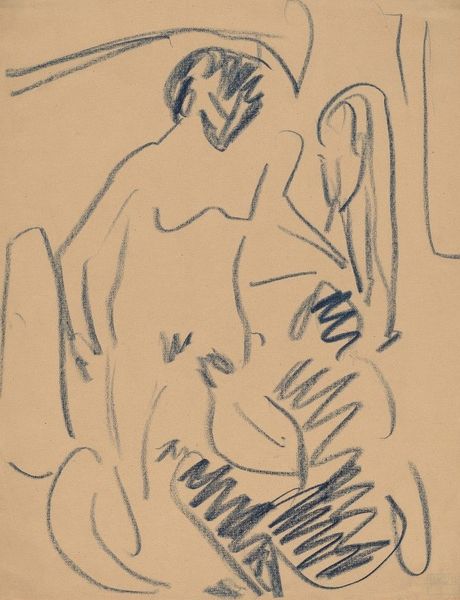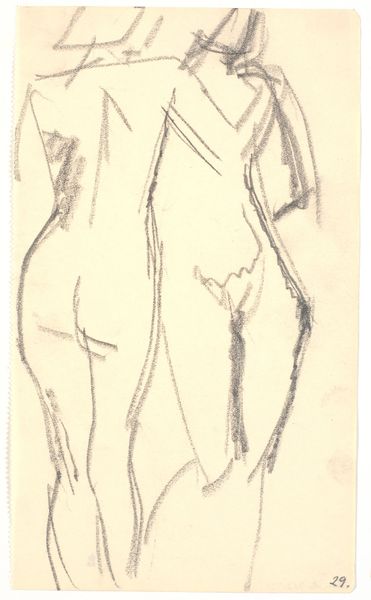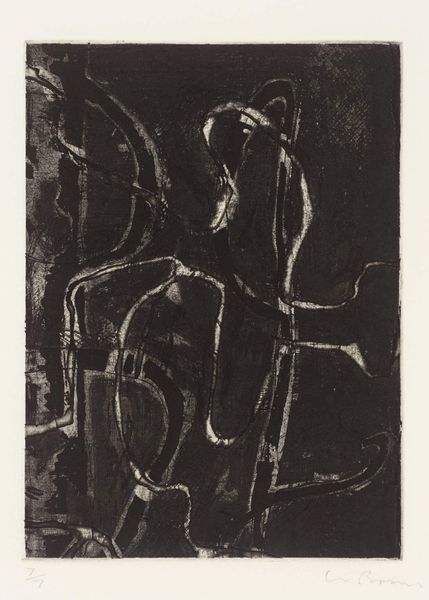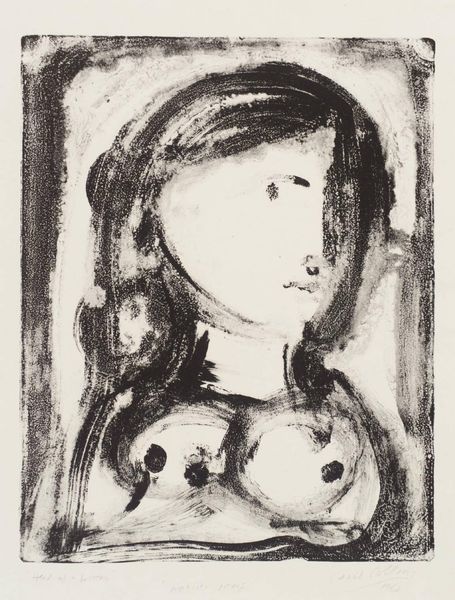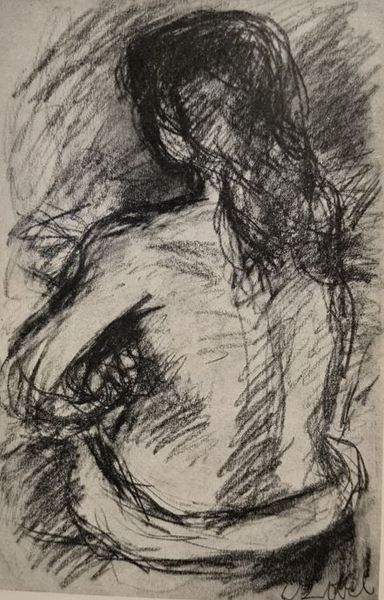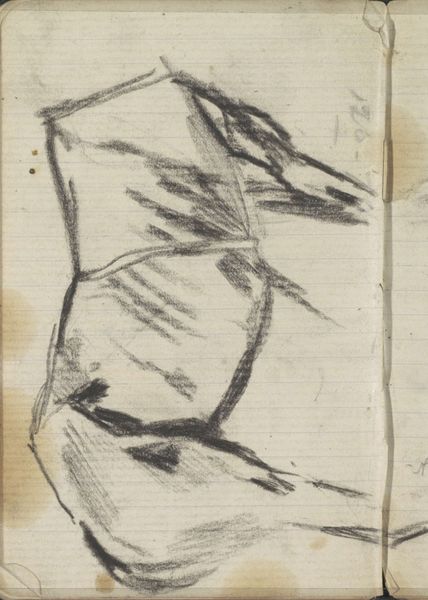
Copyright: National Gallery of Art: CC0 1.0
Curator: This ink drawing by Georges Rouault, titled "Ecce Homo," was completed in 1936. Its bold lines immediately convey a somber mood. What are your initial thoughts on the piece? Editor: Stark and unflinching. The figure's pose is both vulnerable and defiant, immediately provoking thoughts of marginalization, but I’m particularly interested in how the artist utilizes religious art tropes here. Curator: Indeed, the heavy, almost crude linework directs our eyes throughout the composition, emphasizing the stark contrast between light and shadow, while the apparent gaze creates a space for self-reflection. Editor: The “Ecce Homo” title places the figure directly within a tradition of portraying Christ presented to the crowds, which often historically reinforced persecution by religious and political authorities. Rouault perhaps suggests a continuation of such injustice, echoing the suffering experienced in his own socio-political environment during that decade. The lack of color contributes to a timeless sense of despair. Curator: Consider how the minimal color palette of black and white intensifies the gestural quality of the lines. Each stroke appears deliberate and raw, enhancing the emotional power of the artwork. The ink is applied with varying degrees of pressure, which suggests layers of psychological tension. Editor: Looking at it through a feminist lens, I also wonder about the exposed chest and breasts, a rare imagery for this traditional religious title; does this introduce notions of hypersexuality, where this feminine attribute might trigger a certain feeling in the viewer, like guilt or pity? How does that feeling relate to the idea of moral superiority and blame during periods of marginalization and persecution? Curator: Interesting perspective. One could also analyze the abstraction of the figure. Despite its distortions, we can sense an immediate human presence. This echoes Expressionist movements of the early 20th century. Editor: This artwork exemplifies how historical context and formal elements together offer a powerful commentary on injustice and resilience through its artistic depiction. Curator: Absolutely. Rouault has successfully manipulated the composition and medium to evoke both artistic expression and philosophical ideas.
Comments
No comments
Be the first to comment and join the conversation on the ultimate creative platform.
